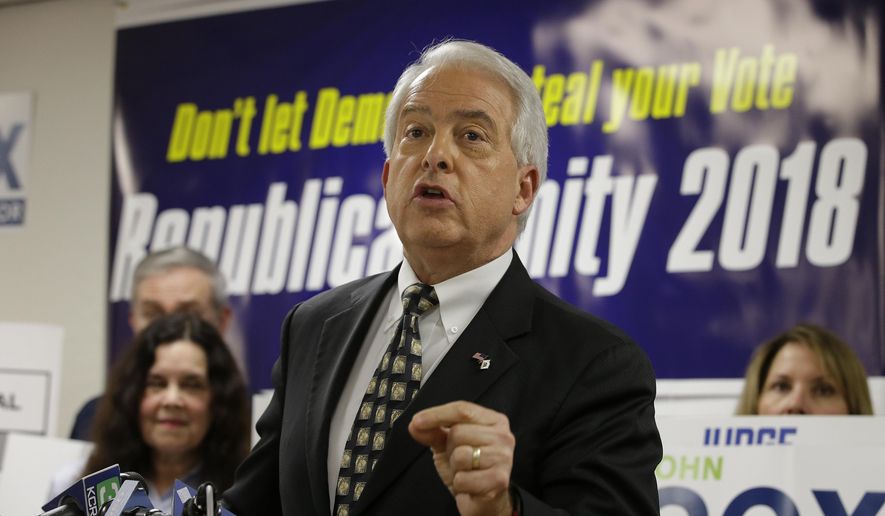
LOS ANGELES (AP) — For years sidelined on the national political fringe, California has lurched to the center of the fight for control of Congress.
No state will be more consequential in the success or failure of a prospective blue wave this fall. But before then, Democrats must avoid self-inflicted wounds in Tuesday’s so-called jungle primaries that feature a swarm of ambitious candidates who could cannibalize their own party’s chances. At the same time, Republicans face the embarrassing prospect of failing to nominate any candidates in marquee races for the U.S. Senate and governor.
California tops a list of eight states holding primary contests on Tuesday. Democrats and Republicans from Montana to Alabama and Mississippi to New Jersey will pick their nominees up and down the ballot to face off this November for the inaugural midterm elections of Donald Trump’s presidency.
With the possibility of a Democratic wave on the horizon, Tuesday’s contests will test voter enthusiasm, candidate quality and Trump’s influence as the 2018 political battlefield begins to settle.
“I look forward (to) watching the Democrats continue to nominate far-left progressives who are running to go to Congress to impeach the president and raise middle-class taxes,” said Corry Bliss, whose Congressional Leadership Fund will spend tens of millions of dollars to defend the House Republican majority this fall.
On the other side, Democratic strategists expect to see new evidence of an anti-Trump backlash, particularly in suburban districts across New Jersey and California, where many voters have soured on the Republican president.
“The California suburbs are the center of gravity for voters rejecting Republicans in the era of Trump,” said Democratic strategist Jesse Ferguson. “When you combine the Democratic energy with the suburban independent voters who want nothing to do with a Trump Republican, you create a toxic combination for a Republican member of Congress trying to get re-elected.”
Democrats must wrestle at least 23 seats from Republican hands to seize control of the House for the second half of Trump’s first term.
There is no more fertile terrain than California, which features seven Republican seats in districts won by Democratic presidential nominee Hillary Clinton in 2016. No other state features more than three such seats....
Yet California’s top-two primary system — often referred to as a jungle primary — complicates things.Under the system, all candidates appear on a single ballot, yet only the top two vote-getters regardless of party advance to a November runoff. In a crowded and competitive race — and there are many — it’s possible that two candidates from the same party advance to the runoff in some districts, leaving the other party with no candidate on the November ballot.That’s a nightmare scenario for Democrats in particular, who claim momentum in some suburban districts but feature packed fields in many cases.National Democrats have spent more than $7 million trying to avoid that fate in districts opened by Republican Ed Royce and Darrell Issa’s retirements and
